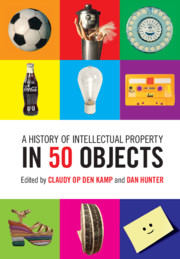'If you gave someone just a list of the eclectic objects in this book and asked ‘what have these got in common?’ they would be utterly stumped. But not if you gave them also this delicious book. What an original idea to show how intellectual property ideas and laws have been the bedrock upon which so much human creativity has been built over the centuries and around the world. And how well that idea has been executed here.'
Robin Jacob - former judge in the Court of Appeal of England and Wales and author of IP and Other Things
'Wow, what a book …! This is a brilliantly conceived trick to teach a deep understanding of a complex idea through the most tangible and compelling collection of things. The things pull you through; the ideas carry you away. IP shown, not told.'
Lawrence Lessig - Roy L. Furman Professor of Law and Leadership, Harvard University, Massachusetts and author of Free Culture, The Future of Ideas and Remix
'Finally, a history of this expanding and increasingly technical body of law that is accessible - inviting - not just to legal scholars but to the curious general reader, including the growing number of faculty across the arts and sciences eager to include intellectual property theory in their courses. The collection’s novel approach, which is to tell the life stories of 50 objects from the mundane to the extraordinary, fosters attention to the rich social and commercial as well as more narrowly legal milieus in which the objects were born, developed and, in some cases, ‘died’.'
Martha Woodmansee - Case Western Reserve University, Ohio and author of The Author, Art, and the Market and The Construction of Authorship
'… this appealing volume makes this essential knowledge comprehensible for students and lay readers.'
M. Herr
Source: Choice
'Overall, then, this is a well-written, thought-provoking and authoritative book, supported by helpful references. Above all, it is a fun read. It would be the perfect present for an IP specialist or for anyone with an interest in society, business or the law. Unreservedly recommended.'
Charles Oppenheim
Source: European Intellectual Property Review
'There are numerous 'History in 50/100 Objects' books out there, but this is the most engaging, intriguing, and expansive I’ve seen yet.'
Glenn Dallas
Source: Tulsa Book Review



